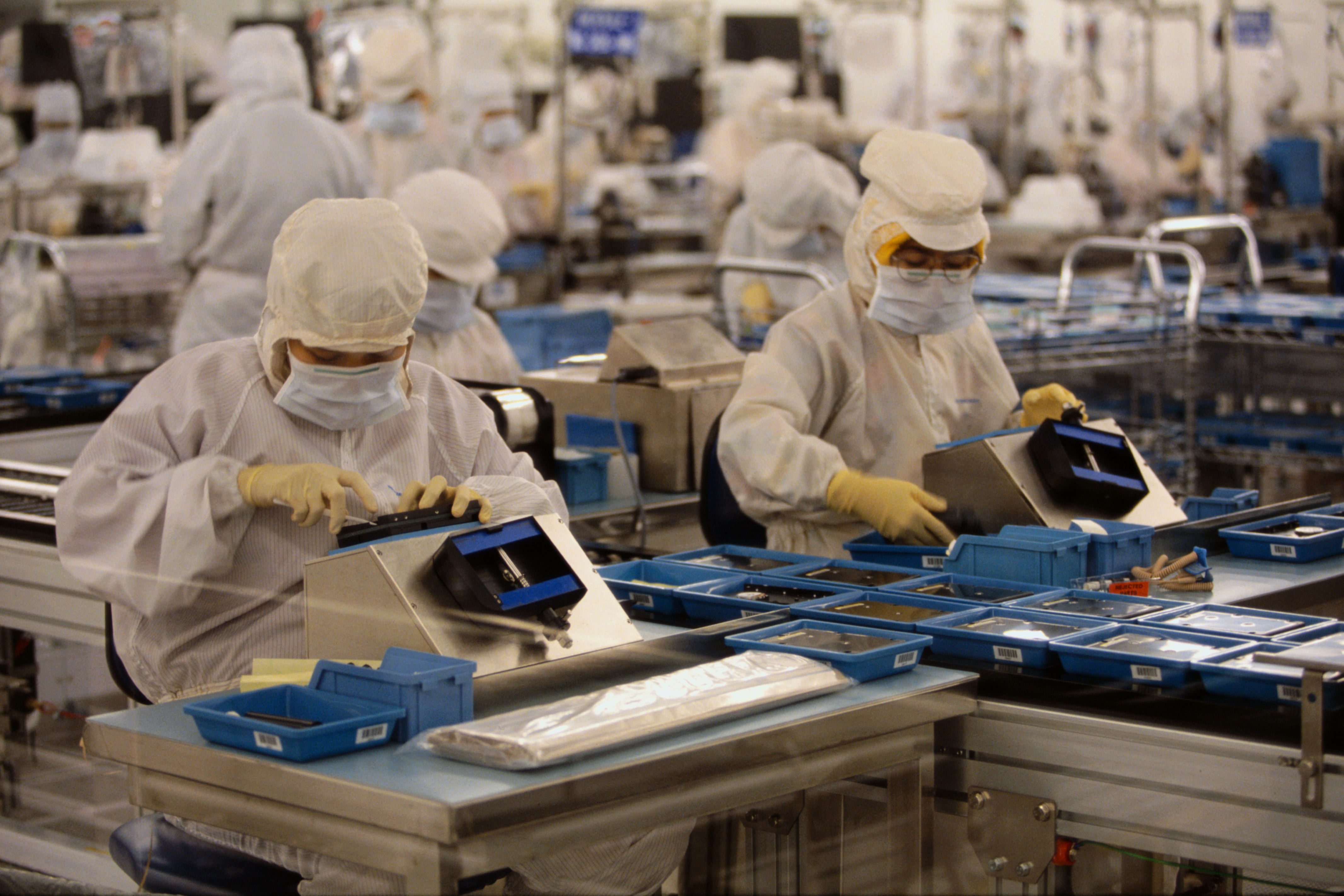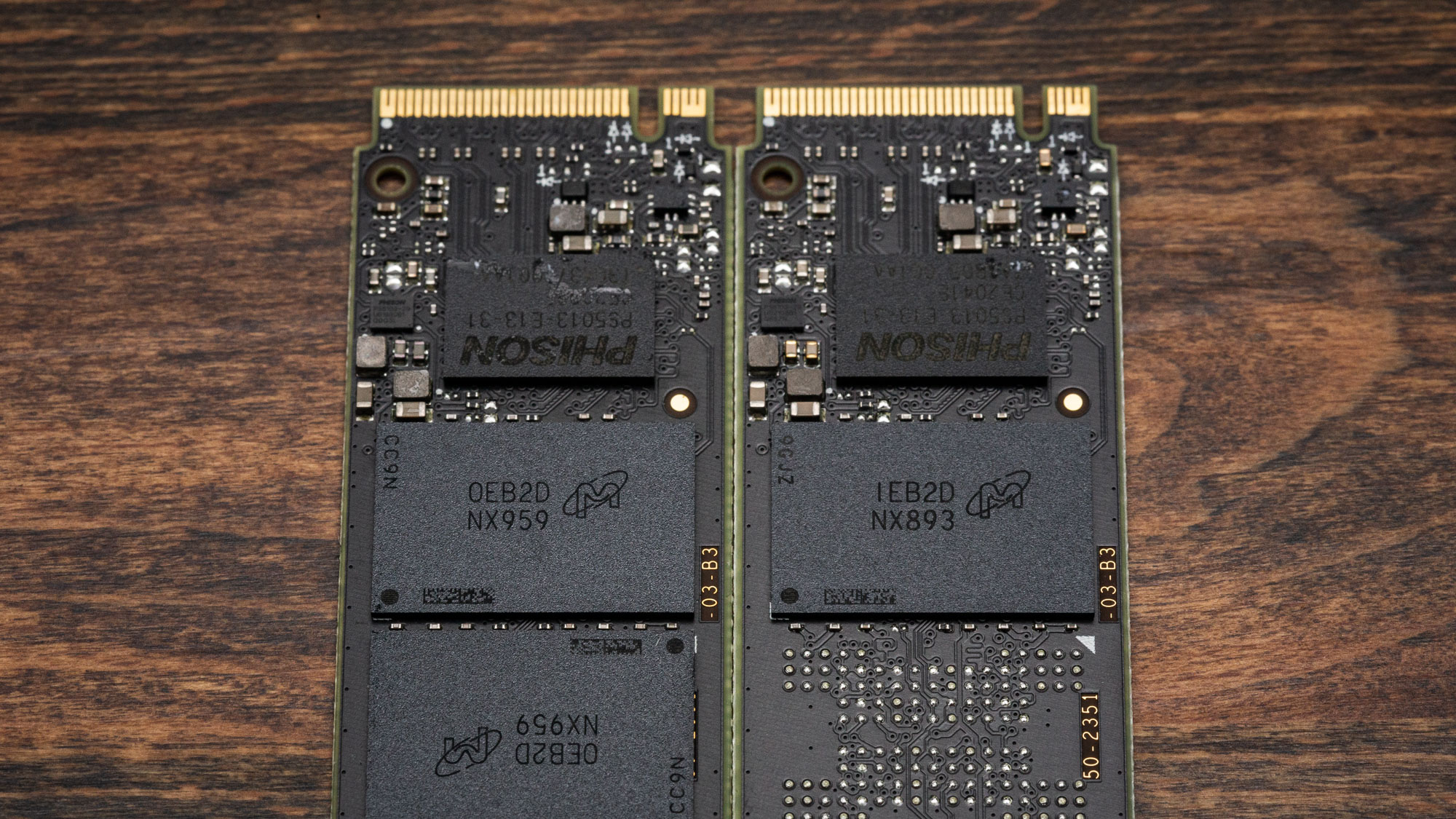Hard drives on backorder for two years as AI data centers trigger HDD shortage — delays forcing rapid transition to QLC SSDs
The AI boom might help QLC overtake TLC in the next two years.

The race to achieve AGI (artificial general intelligence) has pushed constituents to invest in and build data centers at a pace far outstripping our ability to make them. Manufacturers are struggling to keep up with AI demand, and the ongoing DRAM shortage is proof of this, with memory kits costing more than double what they did just a few months ago. Now, DigiTimes is reporting that storage is taking a hit, too, with delivery times for enterprise-grade HDDs delayed by two years.
That means if a firm wants to buy large-capacity hard drives, the backbone of nearline storage, it has to wait 24 months due to long lead times. As the news cycle suggests, AI money doesn't wait for anyone, so hyperscalers are now switching to QLC NAND-based SSDs to avoid these backorders. Picking QLC over TLC allows them to maintain costs while achieving sufficient endurance for cold storage.
However, hoarding QLC NAND creates its own shortage, since every cloud provider in North America and China is now lining up to buy it. This could lead to SSD prices rising worldwide, as most value-oriented models use QLC to save costs. In fact, DigiTimes claims that production capacity for QLC is completely booked through 2026 at some NAND manufacturers.

Therefore, given the current situation, QLC NAND is expected to overtake TLC in popularity by early 2027, marking a significant shift in the storage landscape. While enterprise-grade QLC SSDs would entirely power this pivot, Sandisk has already raised NAND prices by 50%, according to another DigiTimes report, after initially warning of a 10% increase two months ago.
This unprecedented shortage across memory and storage was largely unforeseen. Still, given the AI ambitions of the world's wealthiest, the overnight whiplash is perhaps the only surprising aspect of these price hikes. Last month, the Adata chairman hinted that the situation would only worsen over time, and it's taken just a few weeks for us to receive confirmation.
Every DRAM and NAND manufacturer is now selling capacity to AI customers willing to pay the big bucks. Instead of having 2-3 months of buffer capacity, these firms are down to just a few weeks now. This has led to year-best numbers for many businesses — a sharp turnaround from a few years ago — but, as usual, the short end of the stick trickles down to regular consumers who're now entangled in yet another electronics scarcity.

Follow Tom's Hardware on Google News, or add us as a preferred source, to get our latest news, analysis, & reviews in your feeds.
Get Tom's Hardware's best news and in-depth reviews, straight to your inbox.

Hassam Nasir is a die-hard hardware enthusiast with years of experience as a tech editor and writer, focusing on detailed CPU comparisons and general hardware news. When he’s not working, you’ll find him bending tubes for his ever-evolving custom water-loop gaming rig or benchmarking the latest CPUs and GPUs just for fun.
-
RTX 2080 I buy BluRay and UHD discs of various films and TV shows I like and Rip them to my PC because 1) long term it is cheaper than paying to maintain 5 different streaming services, 2) the quality is higher, and 3) I prefer owning to subscribing. Consequently, I have a need to keep a large quantity of storage drives on hand.Reply
A few months ago an Article was written on this very site announcing Seagate’s new 30TB drives. Right up my alley, so I bought one; $549. Fast forward to 3 weeks ago, there were rumblings that the AI build out would soon create a storage shortage. Remembering the grand old days of Chia mining, I bought a second 30TB drive, the price having already increased to $599. Only 2 days later, the 30TB model was out of stock at Seagate and hasn’t come back in stock since. The 28TB model is currently in stock at $569, more than I paid for my first 30TB model. Who knows if even the 28TB model will be consistently in stock even at these elevated prices in the long term.
It’s rough out there people. It honestly reminds me a lot of trying to buy a RTX 3000 series GPU during COVID; they were either impossible to find or hideously overpriced. Oh well, I’m tempted to buy a RTX 5080 just because I can: a few are available at MSRP. -
yc1 I swear that this is intentional at this point a excuse to raise prices while not improving their product and if the demand doesn't spike allowing a massive price hike they cut production to keep scarcity high and increase prices like what flash memory and ddr 4 manufacturers didReply -
tamalero Reply
its a cycle that repeats.. around 4 years ago they complained of RAM being worthless and companies losing money while producing. Aka oversupply of RAM and chips.yc1 said:I swear that this is intentional at this point a excuse to raise prices while not improving their product and if the demand doesn't spike allowing a massive price hike they cut production to keep scarcity high and increase prices like what flash memory and ddr 4 manufacturers did
Same with hard disks..
And before, during crypto.. there was also a shortage... in reality is all production manipulation just like the gas/oil production worldwide. -
satoasty Yep and to be fair the governments never wanted people to own their stuff by 2030. Probably works in their favour too.Reply
Apart from the stuff I can't prove, is Seagate as reliable as WD I've had a few older drives by Seagate fail on me but 1 was physical on the HDD? -
thesyndrome So now not only are regular consumers getting screwed on RAM and SSD prices due to the NAND shortage, but now we can't even get mechanical drives for a reasonable price any more? And this is combined with GPU's prices always going up since COVID. It feels like the only PC part that hasn't drastically increased in price is CPUs.Reply
Computing is starting to become a ridiculous hobby from a financial perspective, and if anything will contribute to the downfall of AI faster than anything else; how can AI ever hope to make a profit if they've priced-out regular consumers from even being able to access it by making computers too expensive for the regular person, bearing in mind that inflation hasn't stopped and household essentials are still going up in price.?